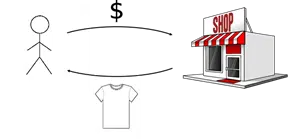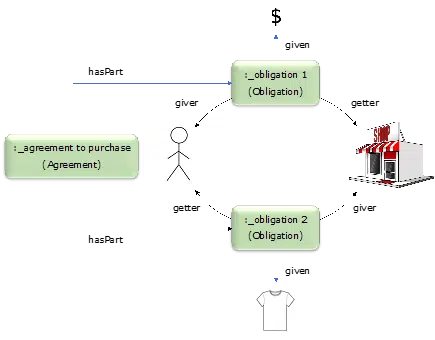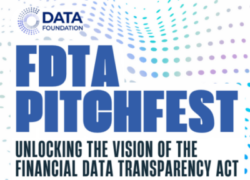by Phil Blackwood, Ph.D.
Without a doubt every business needs to have a clear idea of who its customers are and would love to have a 360 degree view of each customer. However, this customer data is typically scattered across hundreds of applications, its meaning is embedded in code written years ago, and much of its value is locked away in silos. Compounding the problem, stakeholders in different parts of the business are likely to have different views of what the word “customer” means because they support different kinds of interactions with customers.
In this post, we’ll outline how to tackle these issues and unlock the value of customer data. We’ll use semantics to establish simple common terminology, show how a knowledge graph can provide 360 degree views, and explain how to classify data without writing code.
The semantic analysis will have three parts: first we consider the simple use case illustrated in the diagram below, then take a much broader view by looking at Events, and finally we will dive deeper into the meaning of the diagram by using use the concept of Agreements.
The diagram shows an event in which a customer purchases a shirt from a shop. Ask stakeholders around your company what types of events customers participate in, and you are likely to get a long list. It might look something like this (the verbs are from the viewpoint of your company):
- Answer general questions about products and services
- Create billing account for products and services
- Create usage account for a product or service
- Deliver product or service (including right-to-use)
- Finalize contract for sale of product or service
- Help a customer use a product or service
- Identify a visitor to our web site.
- Determine a recommender of a product or service
- Find a user of a product or service
- Migrate a customer from one service to another
- Migrate a service from one customer to another
- Prepare a proposal for sale of product or service
- Receive customer agreement to terms and conditions
- Receive payment for product or service
- Rent product or service
- Sell product or service
- Send bill for product or service
- Ship product
We can model these events using classes from the gist ontology, with one new class consisting of the categories of events listed above. When we load data into our knowledge graph, we link each item to its class and we relate the items to each other with object properties. For example, an entry for one event might look like:
By using categories instead of creating 18 new classes of events, we keep the model simple and flexible. We can round out the picture by realizing that the Person could instead be an Organization (company, non-profit, or government entity) and the Product could instead be a Service (e.g. window washing).
In a green-field scenario, the model and the data are seamlessly linked in a knowledge graph and we can answer many different questions about our customers. However, in most companies a considerable amount of customer data exists in application-centric silos. To unlock existing customer data, we have to first understand its meaning and then we can link it into the knowledge graph by using the R2RML data mapping language. This data federation allows us to write queries using the simple, standard semantic model and get results that include the existing data.
For any node in the knowledge graph, we have a 360 degree view of the data about the node and its context. A Person node can be enriched with data from social media. An Organization node can be enriched with data about corporate structure, subsidiaries, or partnerships.
Now let’s pivot from the broad event-based perspective to look more closely at the meaning of the original example. Implicit in the idea of a sale is an agreement between the buyer and the seller; once the agreement is made, the seller is obligated to deliver something, while the buyer must pay for it. The “something” is a product or service. We can model the transaction like this:
This basic pattern of agreement and obligation covers many use cases. The agreement could be the simple act of placing the shirt on the check-out counter, or it could be a contract. Delivery and payment could coincide in time, or not. Payments or deliveries, or both, could be monthly.
If our Contract Administration group wants a simple way to identify all the customers who have a contract, we can create a Class named ContractCustomer and populate it automatically from the data in our knowledge graph. To do this, we would write an expression similar to a query that defines what we mean by ContractCustomer, declare the Class to be equivalent to the expression, and then run an off-the-shelf, standards-based inference engine to populate the new class. With no code needed … it’s model-driven.
This method of automatically populating classes can be used to support the wide variety of needs of stakeholders in different parts of the company, even though they do not have the same definition of customer. For example, you could provide classes like PayingCustomer and ProductUsers that can be used to simplify the way the data is accessed or to become building blocks in the model to build upon. With this approach, there is no need to try to get everyone to agree on a single definition of customer. It lets everyone stay focused on what will help them run their part of the business.
While many refinements are possible, we’ve outlined the core of a data-centric solution to the knotty problem of managing customer data. The semantic analysis reveals a simple way to capture information about customer interactions and agreements. A knowledge graph supports 360 degree views of the data, and an inference engine allows us to populate classes automatically without writing a single line of code.
I hope you can glean some ideas from this discussion to help your business, and that you get a sense of why semantics, knowledge graphs, and model-driven-everything are three keys to data-centric architecture.






